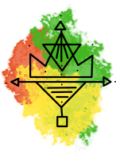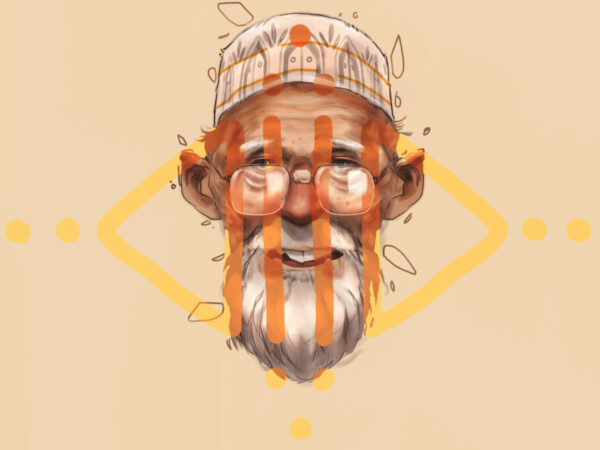Despite growing urbanization and Arabization, Morocco’s genuine pulse may be found in its people, who are nonetheless as varied and intriguing as the nation itself. Morocco’s inhabitants are no different from the country in that they are a maze of contradictions and complexities. They are on the verge of change in the twenty-first century. Morocco is a young nation with roughly 45 percent of the population under the age of 25, thus even while they are proud of their heritage, the young in particular are becoming more global, outward-looking, modern, and educated. The challenge for the majority of Moroccans today is how to reconcile history and present and strike a balance between a profound love of their country and the social and economic changes taking place elsewhere in the world.
The contrasts between the traditional and the modern, the rich and the poor, the male and the female, the urban and the rural, the Berber and the Arab, are all crucial to the tale of the Moroccan people. The Moroccan people have been distinguished by their diversity ever since the first invaders and colonizers stormed through the nation, affecting and blending with the indigenous culture. You will notice dramatic contrasts in how individuals appear, dress, speak, and conduct as you move across the nation.
Berbers and Arabs
The Berbers, an ancient indigenous race of Morocco, make up about 60% of the country’s current population. However, they must fight to preserve their cultural identity in the face of the Arab culture, which is dominant but only a small portion of the country’s population, and which spread to Morocco after the Islamic conquest in the 7th century. Despite the fact that the majority of Moroccans speak a variation of the local Berber language as their first language, the native tongue has only recently been recognized as an official language of Morocco.
The Riffians, or Tarifit, of the north, the Imazighen of the Middle Atlas, and the Shilha of the High and Anti-Atlas are the three main types of Berbers (split into innumerable tribes). Many ideas about their origins, including the potential of European ancestry, which is probably based on the not uncommon incidence of pale skin and blue or green eyes, are yet unconfirmed.
Jews and Christians
Moroccan (Sunni) (Sunni) Moroccans are incredibly proud of the fact that Islam has historically been liberal and flexible, and they frequently take great pleasure in telling you this. Although there are colorful accounts of Christian slavery in the 17th century and the exodus of the majority of Jews in 1948 with the establishment of Israel, Moroccan Muslims recognize Judaism and Christianity as fellow “religions of the book” that have existed in Morocco for nearly 2,000 years. Morocco claims historical respect for both religions.
As the messenger of Allah, Jesus is one of Islam’s most significant prophets, and Mary is the lady who appears most frequently in the Qur’an. Similar to the Jewish Abraham, the Muslim Ibrahim is one of Islam’s most renowned prophets, and Muslims slaughter a sheep each year to celebrate Aid el Kebir (also known as Eid al-Adha in other parts of the Islamic world) in honor of Ibrahim’s willingness to offer his son as a sacrifice.
In order to avoid the Inquisition, many Jews moved from Spain to Morocco, where they lived in numbers approaching 200,000 before 1948 but only 6,000 today. Every city has a Jewish neighborhood, or mellah, and because Moroccan Jews were so revered, this neighborhood was always constructed adjacent to the palace so that it might receive royal protection. In some Moroccan cities, you may also locate a number of old Christian churches and cemeteries, including Tangier’s Church of Saint Andrew, where Walter Harris and other people are buried.
Social and economic divides
The differences between urban and rural life in Morocco are getting wider and wider as the country moves forward into the twenty-first century. First-time tourists frequently comment on how timeless rural Moroccan villages appear, with their pisé buildings blending into the harsh surroundings in which they are located and their residents appearing to live in another era.
Even the most remote Moroccan villages now have electricity, but life continues to be subsistence-level and dependent on harvests and livestock. Water is still carried from wells by donkeys, food is still cooked over a traditional hearth, and children still work in the fields or tend herds of goats and sheep. The majority of males will relocate to a town or city with greater possibilities when they reach their adolescent years since life is difficult. In fact, urbanization is accelerating, with 57 percent of Moroccans currently residing in a city or town.
Morocco’s rural areas are very different from major cities like Casablanca, Tangier, and Marrakech. In this place, almost every resident will have a cell phone, and possibly a car and satellite TV as well. The streets are lined with upscale shops and eateries, guarded by wealthy youth and upwardly mobile twenty-somethings flaunting the newest trends. Their plunging necklines and skimpy skirts provide an almost surreal contrast to the older generation of Moroccan women, who are modestly attired in coats and headscarves.
Honouring tradition
The Western world’s alluring allure and its contemporary trappings have not yet succeeded in eradicating Morocco’s distinctive cultural heritage. Young people may strut around in fake designer jeans and sunglasses with the newest smartphones, mingling with friends of the opposite sex in internet cafes, and discussing global politics on Facebook; they may be fans of the newest American hip-hop band or British conceptual artist; they may want to travel and see the world; but they all share a similar trait: an intense pride in and love for their country, as well as a profound respect for their national heritage.
A thoroughly Westernized girl singing a Berber folk song (perhaps with a rap layered over top) or waxing poetic about a Moroccan poet who lived 200 years ago may be seen, as may a young man in a hoodie and low-slung trousers meticulously crafting a stucco archway. Morocco stands out from many emerging – and Islamic – nations due to its easy modernity without sacrificing its enduring ties to tradition.
Family and community
For a Moroccan, family is everything. It unites everyone and is more important than anything else. The majority of males continue to live with their families when they are married, and even the smallest residences can accommodate several generations of one family. They also share all money generated (including sending a sizeable amount of wages home for those who live abroad). They actually feel sorry for the small nuclear family in the West because they perceive it to be meaningless and lonely. Happiness for a Moroccan is more about the health and happiness of their family than it is about personal space or freedom. Every cousin, no matter how distantly connected, is loved and cared for as if they were a brother or sister.
National and local holidays are ardently observed, as well as societal and familial customs. The conduct of family events such as births, circumcisions, marriages, the return of the Hajj (the pilgrimage to Mecca that all able-bodied Muslims should do at least once in their lifetime if they can afford to do), burial, and the major religious festivals (the birthday of the Prophet, Aid es Seghir, marking the end of Ramadan, and Aid el Kebir, commemorating Ibrahim’s sacrifice of a sheep in place of hison, held 70 days after Rama On the seventh day following the birth of a child, a lamb is sacrificed for a feast;
A chicken or perhaps a rabbit will be substituted if the household is underprivileged. Another feast is arranged, the boy is dressed in traditional attire, and he receives gifts of money for his circumcision, which is performed on boys between the ages of three and four and nowadays is typically done under a local anesthetic. The majority of marriages are still arranged , and elaborate ceremonies lasting several days are still the standard. However, an increasing number of brides and grooms are choosing a simple ceremony, and many couples are forgoing the traditional full-blown wedding held six months to a year later in favor of living together after the “engagement” (a binding contract marked by an official ceremony and dissolved only by divorce or death).
omitting the typical full-blown wedding, which is held six months to a year later. More than any other Islamic country, Morocco is a place where traditionalists and modernists may live in harmony with one another.


